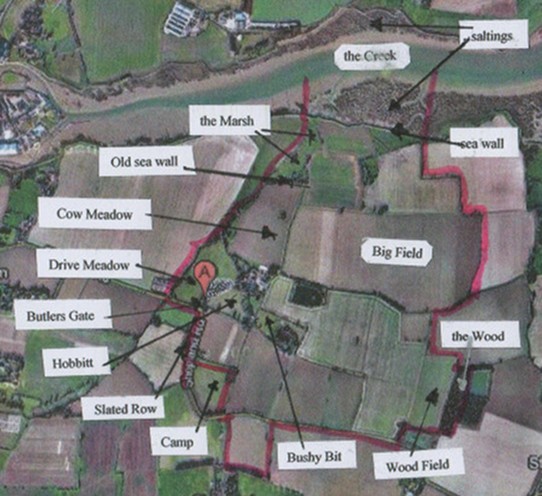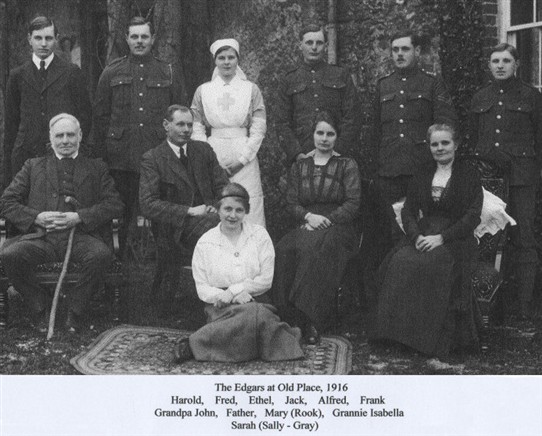LIFE AT BUTLERS - 01
How we got there
By Martin Edgar
1. HOW WE GOT THERE
The Edgars came from Cumberland, though to be more exact, it was from the country just outside Keswick. The church registers of Crossthwaite Church show them living in the area back to the 1600's. Latterly they were tenants of Ormathwaite Farm, just next door to Ormathwaite House, with a fine view across the valley floor to Derwent Water, and with the fells of Skiddaw rising up behind. That was sheep country, where my father, Henry Edgar ("Harry"), (born there in 1887) was brought up and got to know his sheep. Like those of his time, he walked the two miles or so to school and back again, and finished schooling at 13.
The Brocks were similarly a farming family, and were long established in Devon, between Exeter and Dartmoor. Latterly they had Holloway Farm at Kenn, a few miles down the Plymouth road from Exeter, where Grandpa William Brock was born in 1870. In about 1898, he married Alice Grace Whiteway, the daughter of the millers at Town Mills, Chudleigh, down the road. I have the photographs of each taken on the occasion of their engagement, and a handsome couple they look too. Rupert has the inlaid mahogany and ebony card table that was one of their wedding presents. William and Alice set out on the great adventure by setting up in Hampshire, and taking Pullens at West Worldham, near Alton. Their first child, my mother Grace Mary Brock, was born there in 1900. Liz has the set of four Regency chairs that were in the Morning (breakfast) Room at Pullens, just off the kitchen.

The moves to Hampshire were typical of the period. There had been a farming depression in the 1890s, particularly in the arable heartlands of England, largely caused by cheap imports of grain from Australia and Canada (shades of the Cutty Sark?). Farms could be rented at low rents, with perhaps a year or two rent free, so that the farms of the landed estates in the south were worked and did not fall derelict. Grandpa Brock took Pullens rent free for the first two years. These newly arrived sheep and cattle farmers from the north and the west were called "dog and stick farmers" by the Hampshire locals.
From Cumberland, the Edgars' friends, the Wrens, were first to come down. They found a place also in Hampshire, in the Meon valley, and sent word back to the Edgars that Old Place at East Tisted was available to rent. So the Edgars decided to take it and moved down by rail, including stock, over-nighting at Kings Cross, and on down to Hampshire. Grandpa John Edgar died in 1920, and Harry as the eldest son took over the running of the farm together with Grannie Isabella Edgar. So it was at the dances, tennis parties and visiting each others houses that Grace and Harry met in the 1920s, with West Worldham and East Tisted being only a few miles apart. They were sweethearts for quite a while until in 1930, when Harry had settled his siblings and handed over the running of Old Place to his youngest brother Harold. Harry married Grace at last and took Butlers Farm at Shopland, near Rochford in Essex, as tenant of the Tabor Estates and succeeding the Andrews. It would seem that the Andrews had been fairly severe masters, and it was probably something of a relief for the staff to have gentler hands on the tiller.
